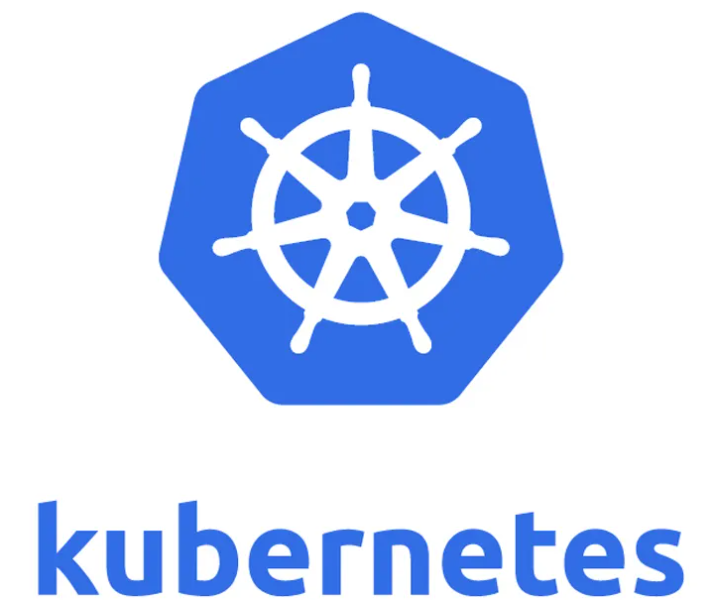Kubernetes Future Trends and Predictions: Growing Adoption of GitOps
Using GitOps for Kubernetes management is considered one of the most common factors in Kubernetes Future Trends and Predictions. GitOps is a methodology that uses DevOps principles for infrastructure automation, with git as the main repository for declarative infrastructure and applications. Incorporating git into the deployment process enables organizations to have better control over versioning, collaboration, and compliance tracking.
This trend reflects a broader shift toward more transparent, audited, and automated IT operations, where pull requests drive infrastructure changes, making rollback and security improvements easier.
The benefits of GitOps range from swift deployment to the enhanced stability and reliability of applications in Kubernetes. As GitOps adoption grows, new tools and practices continue to develop, establishing it as a key approach to implementing Kubernetes management.
Emergence of Kubernetes-Native Tools
This is one of the major trends in Kubernetes Management. There is a growing trend in the development and adoption of tools specifically designed for the Kubernetes environment. Kubernetes-native tools, including monitoring and logging solutions as well as security and compliance scanners, integrate deeply with the Kubernetes architecture and offer more specialized functionality compared to general-purpose tools.

Policy-as-Code and Automated Vulnerability Scanning
Policy-as-code and automated vulnerability scanning are increasingly important for bolstering the security of Kubernetes clusters. By encoding security policies and compliance rules as code, organizations can automate the enforcement of these policies across their Kubernetes environments. This method ensures uniform security practices and compliance standards, minimizes the risk of human error, and allows for quicker responses to security threats.
Automated vulnerability scanning tools, integrated into the Kubernetes management workflow, enable continuous monitoring and detection of security weaknesses in container images and configurations. These tools are crucial for preventing potential breaches by identifying vulnerabilities early in the development cycle and throughout the deployment process.
Increase in Service Mesh Adoption
This is another addition to trends in Kubernetes Management. Service mesh technology is increasingly being adopted in Kubernetes management due to the growing demand for advanced traffic management, security, and observability features. By providing a dedicated infrastructure layer for managing service-to-service communication, a service mesh enables developers to separate application logic from networking concerns.
As a result, organizations can implement sophisticated traffic routing, load balancing, service discovery, and encryption within their Kubernetes clusters more effectively. In this way, a service mesh simplifies the management of communication between microservices, making it a valuable tool for Kubernetes environments.

The rise in service mesh usage highlights the complexities of managing microservices architectures and the necessity for more detailed control over communication and security policies. As applications become more distributed, effective monitoring, securing, and controlling inter-service communication at scale is essential. Service meshes like Istio, Linkerd, and Consul are becoming crucial elements in Kubernetes ecosystems.
1 – Increased Adoption and Maturity
Kubernetes has evolved to a point where it is no longer solely for early adopters and cloud-native enthusiasts. Enterprises of all sizes are now incorporating Kubernetes into their IT infrastructures. This widespread adoption is anticipated to increase, driven by the platform’s scalability, flexibility, and efficiency.
As more organizations transition their workloads to Kubernetes, the surrounding community and ecosystem will continue to grow, offering more robust support and driving further innovation.
2 – Edge Computing
Edge computing, which involves processing data closer to its source rather than in a centralized data center, is a major trend shaping the future of Kubernetes. Kubernetes’ modular and extensible design makes it particularly well-suited for edge deployments. It plays a crucial role in managing edge workloads, supporting low-latency applications, and enabling real-time data processing.
3 – AI and Machine Learning Integration
The integration of artificial intelligence (AI) and machine learning (ML) with Kubernetes is an emerging trend. Kubernetes provides a powerful platform for deploying AI/ML workloads due to its scalability and ability to handle complex applications.

Tools like Kubeflow simplify the deployment of machine learning models on Kubernetes. As AI and ML development advances, Kubernetes continues to emerge as the standard for managing and scaling these workloads, providing a unified platform for both development and production environments.
4 – Serverless Architectures
Serverless computing, which enables developers to build and run applications without managing server infrastructure, is gaining popularity. Kubernetes offers features for deploying, running, and managing serverless applications. This trend is likely to expand, providing developers with the advantages of Kubernetes’ orchestration capabilities while reducing the need to manage infrastructure.
5 – Security Enhancements
With the growing adoption of Kubernetes, security is becoming increasingly important. The complexity of Kubernetes environments can lead to security vulnerabilities if not properly addressed. The community is placing a stronger emphasis on security, with efforts such as the Kubernetes Security Audit and tools like Kubernetes Network Policies and Secrets Management gaining traction.

Future advancements are expected to include more sophisticated security features, such as:
- Automated Vulnerability Scanning: Tools for continuously identifying and addressing security weaknesses.
- Enhanced Identity and Access Management: Improved systems for managing user identities and access controls.
- Better Integration with Existing Security Frameworks: More seamless connections with current security protocols and systems.
6 – Hybrid and Multi-Cloud Deployments
Hybridization is of the Trends in Kubernetes Management. Organizations are increasingly adopting hybrid and multi-cloud strategies to avoid vendor lock-in and enhance resilience. Kubernetes is well-suited for these environments due to its portability and consistency across various cloud providers.
Tools such as Google’s Anthos and Microsoft’s Azure Arc are already facilitating hybrid and multi-cloud Kubernetes deployments. This trend is expected to continue, with Kubernetes acting as the central platform for diverse environments.
7 – Enhanced Developer Experience
The Kubernetes community is placing a stronger emphasis on improving the developer experience. New tools and frameworks are being developed to simplify Kubernetes application development, deployment, and management. Future improvements are likely to include more user-friendly interfaces, enhanced documentation, and Java IDEs (integrated development environments) tailored for Kubernetes.
8 – Growth of Kubernetes Operators
Kubernetes Operators, which automate the management of complex stateful applications, are becoming more common. Operators embed the operational expertise needed to run an application, making management and scaling easier. The Operator Framework project is facilitating the development of these operators.
Predictions for Kubernetes Management

Cross-Cluster Management Becomes Mainstream
As Kubernetes expands across various clouds and on-premises environments, the need for cross-cluster management grows more critical. By 2024, managing multiple Kubernetes clusters as a unified system will likely become standard practice, driven by the need for greater scalability, redundancy, and flexibility.
Tools for cross-cluster management are advancing to offer centralized visibility and control over diverse Kubernetes environments. These tools enable consistent policy enforcement, workload balancing, and disaster recovery across clusters.
This shift towards cross-cluster management highlights the growing complexity of Kubernetes ecosystems and the need for solutions that simplify the management of multi-cluster and multi-cloud infrastructures. By abstracting the complexities of individual clusters, these tools assist organizations in fully utilizing Kubernetes for large-scale, distributed applications.
Rise of Machine Learning Ops (MLOps)
Kubernetes is expected to become a standard platform for managing model training and deployment pipelines. Dedicated MLOps tools for Kubernetes will offer capabilities for model management, monitoring, and governance.
Infrastructure stacks such as Kubeflow Pipelines will streamline ML workflows. By 2028, it is predicted that over 50% of machine learning applications will operate on Kubernetes platforms, utilizing MLOps best practices.
AI for Smart Infrastructure Management
Kubernetes platforms will increasingly use reinforcement learning and other AI techniques to optimize resource allocation, scheduling, autoscaling, and more. Cluster management will become more adaptive and resilient in response to dynamic workloads. AI-powered tools will be able to detect incidents, predict future failures, and take preventive measures.
ML Inferencing Workloads on Kubernetes
Kubernetes will become a prevalent platform for deploying and managing machine learning inferencing workloads at scale. ML frameworks such as TensorFlow Serving and Triton Inference Server will facilitate the running of containerized models. The use of hardware acceleration with GPUs and FPGAs will enhance performance. Pre-built ML stacks will make large-scale inferencing on Kubernetes easier.
Integration of AI and Machine Learning
AI and machine learning (ML) integrate into Kubernetes management as part of the broader AIOps movement, transforming how organizations deploy, monitor, and secure their containerized environments.
AI and ML algorithms will analyze extensive operational data to predict and address issues before they affect performance or security. This predictive capability will enable proactive resource management, enhance security through anomaly detection, and improve overall reliability and efficiency.

As AI and ML technologies advance, their role in Kubernetes management will likely grow to include optimizing resource allocation, automating routine tasks, and providing valuable insights for decision-making.
This integration marks a significant shift towards more intelligent and autonomous container orchestration, potentially reducing the operational burden on DevOps teams and improving application performance.
Growing Importance of Resource Optimization and Sustainability
In 2024, there is a heightened focus on resource optimization and sustainability within Kubernetes clusters. Organizations are increasingly looking to reduce their environmental impact and operational costs by enhancing the efficiency of their Kubernetes deployments. This includes strategies for lowering energy consumption, maximizing resource utilization, and reducing waste through more effective container orchestration.
The increased emphasis on sustainability and resource optimization mirrors broader societal and industry trends towards environmental responsibility and cost-effectiveness. Kubernetes management practices and tools are adapting to support these objectives, offering features such as automated scaling, resource quotas, and efficiency analytics. These advancements not only promote more sustainable IT operations but also align with organizational goals for cost reduction and operational efficiency.
Kubernetes Becomes the Default Platform for Cloud-Native Applications
In the next five years, Kubernetes is expected to become the primary platform for deploying cloud-native applications in production environments. Its flexibility, portability, and extensive ecosystem of tools will maintain its popularity even as new competitors arise. It is anticipated that over 75% of new cloud-native applications will be deployed on Kubernetes from the outset.
Rise of Serverless and Function-as-a-Service
The serverless model will gain traction for certain workloads. Technologies such as Knative and OpenFaaS will introduce serverless features like auto-scaling and granular billing to Kubernetes environments.
Improved Multi-Cloud and Hybrid Cloud Support
Most organizations will operate within multi-cloud or hybrid cloud environments. Kubernetes tools will advance to support greater portability and consistency across various cloud platforms. Technologies such as cluster federation, service meshes, and GitOps pipelines will see improvements. In future, managing a unified Kubernetes environment spanning on-premises, hybrid, and multi-cloud setups will be more feasible.
Rise of Containerized Stateful Applications
While Kubernetes has traditionally been used for stateless applications, new features will enable it to manage more stateful workloads like databases, caches, and storage systems. Developments in operator frameworks, StatefulSets, and volume management will facilitate the operation of stateful applications on Kubernetes.
Improved Observability and Diagnostics
Performance and Scalability Improvements
Kubernetes will evolve to support massive clusters with thousands of nodes and millions of pods. Resource usage will be optimized through techniques like bin packing, vertical scaling, and auto-scaling. Innovations such as 5G and edge computing models, like K8s-as-a-Service, will emerge. Performance SLAs and benchmarks will be established to ensure Kubernetes can handle demanding workloads.
Rise of Containerized Build Pipelines
Container-native CI/CD platforms, such as Tekton Pipelines, will become more popular for integrating build, test, and deployment processes into Kubernetes environments. From code compilation to integration testing to artifact management, everything will utilize containers and cluster resources. Pipelines will be easier to migrate across Kubernetes clusters.
Integration of LLMs into DevOps Platforms
Large language models (LLMs) like Codex and GPT-3 will be incorporated into developer tools and Kubernetes platforms to automate various tasks. They will assist with generating boilerplate code, debugging issues, suggesting infrastructure configurations, and predicting resource usage.
Integration of LLMs into DevOps Platforms
Organizations will increasingly aim to optimize Kubernetes for better energy efficiency, cost savings, and resource management. Metrics and benchmarks focused on Kubernetes sustainability will develop. Green software engineering practices will emerge, emphasizing resource right-sizing, serverless computing, and optimizing data transfer and pipelines.
[Want to learn more about Kubernetes Future Trends and Predictions? Click here to reach us.]
Conclusion
The landscape of Kubernetes management is rapidly evolving, with several key trends shaping its future. As Kubernetes continues to solidify its position as the default platform for cloud-native applications, its integration with cutting-edge technologies like AI, machine learning, and edge computing is becoming increasingly significant.
The rise of serverless and function-as-a-service models, coupled with advancements in multi-cloud and hybrid cloud support, highlights the platform’s growing versatility and its role in modern IT environments.
The focus on resource optimization and sustainability is driving innovations that enhance efficiency and reduce environmental impact, while improved observability and diagnostics are making it easier to manage complex Kubernetes deployments.
The expansion of containerized build pipelines and the integration of large language models into DevOps processes further illustrate how Kubernetes is adapting to meet the demands of contemporary software development and operations.
As these trends continue to unfold, staying ahead of the curve is crucial. Bobcares offers comprehensive Kubernetes support services that can help organizations navigate these changes effectively.
From managing complex multi-cluster environments to optimizing resource utilization and ensuring robust security, Bobcares provides the expertise and tools needed to maximize the benefits of Kubernetes. By leveraging Bobcares’ support, businesses can optimize their Kubernetes environments, drive innovation, and maintain a competitive edge in the rapidly evolving world of cloud-native applications.







0 Comments